 |
 |
Our enthusiastic and extremely knowledgeable perennials team is here to answer your questions and help you choose the best perennials for your situation. There’s always something in bloom for sun, shade, butterflies, birds or deer resistance as well as a variety of bulbs for your space.
Stroll through our time-tested favorites and introduce yourself to the newest varieties. We garden with perennials too; we love them and it shows!
|
35 found, showing page 2 of 3
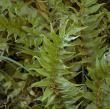
Upright light green tapered fronds. Naturalizing.USDA 4-9
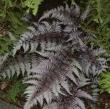
Height: 18 inches
Spread: 24 inches
Sunlight: partial shade, full shade
Hardiness Zone: 4a
Other Names: Crested Japanese Painted Fern
Description:
Attractive tri-color fronds of silver, red and pale green; colorful maroon-red central stems and veins; compact and dense, perfect for shady spots; beautiful in masses on the edges of ponds or streams
Ornamental Features:
Regal Red Painted Fern is primarily valued in the garden for its cascading habit of growth. Its attractive twisted ferny bipinnately compound leaves emerge dark red in spring, turning silver in color with pointy dark red spines throughout the season. The red stems are very colorful and add to the overall interest of the plant.
Landscape Attributes:
Regal Red Painted Fern is a dense herbaceous fern with a shapely form and gracefully arching fronds. It brings an extremely fine and delicate texture to the garden composition and should be used to full effect.
This is a relatively low maintenance plant, and usually looks its best without pruning, although it will tolerate pruning. Deer don't particularly care for this plant and will usually leave it alone in favor of tastier treats. It has no significant negative characteristics.
Regal Red Painted Fern is recommended for the following landscape applications:
- Mass Planting
- Border Edging
- General Garden Use
- Groundcover
- Naturalizing And Woodland Gardens
Planting & Growing:
Regal Red Painted Fern will grow to be about 18 inches tall at maturity, with a spread of 24 inches. Its foliage tends to remain dense right to the ground, not requiring facer plants in front. It grows at a slow rate, and under ideal conditions can be expected to live for approximately 15 years. As an herbaceous perennial, this plant will usually die back to the crown each winter, and will regrow from the base each spring. Be careful not to disturb the crown in late winter when it may not be readily seen!
This plant does best in partial shade to shade. It prefers to grow in moist to wet soil, and will even tolerate some standing water. It is particular about its soil conditions, with a strong preference for rich, acidic soils. It is somewhat tolerant of urban pollution, and will benefit from being planted in a relatively sheltered location. Consider applying a thick mulch around the root zone over the growing season to conserve soil moisture. This is a selected variety of a species not originally from North America, and parts of it are known to be toxic to humans and animals, so care should be exercised in planting it around children and pets. It can be propagated by division; however, as a cultivated variety, be aware that it may be subject to certain restrictions or prohibitions on propagation.
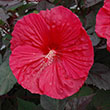
Vivid, magenta blooms in the summer. Dark, purple-tinged foliage accents bright flowers. USDA 4-9
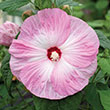
Ruffled white blooms are blushed with pink and centered with dark-red. USDA 4-9
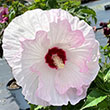
Large white ruffled flowers with a red center and blush pink edges. Upright, shrub-like. USDA 4-9
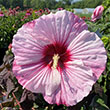
Pink-blushed white flowers contrast against dark, purple foliage. Shrub-like habit. USDA 4-9

Attractive verigated grass-like foliage and large, spectacular pale blue blooms. USDA 4-9
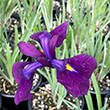
Purple blooms. Variegated foliage. Tolerates wet conditions. USDA 4-9
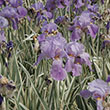
Pale blue blooms. Fragrant. Cream & green variegated foliage. USDA 4-9

Vibrant blue blooms. Compact, clumping foliage. USDA 4-9

Tall selection forms an upright mound of blue-green leaves. Tiny reddish-brown flower. Winter interest. USDA 4-9

Heat and humidity tolerant, mounding habit, and periwinkle blue blooms appearing late spring. Near-Black Stems. USDA 4-9
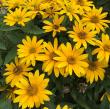
Golden yellow blooms. Compact, upright habit. Heat tolerant. Long bloomer. USDA 4-9
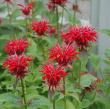
Height: 4 feet
Spacing: 30 inches
Sunlight: full sun partial shade
Hardiness Zone: 3a
Other Names: Bergamot, Oswego Tea
Ornamental Features:
Jacob Cline Beebalm has masses of beautiful clusters of fragrant red flowers at the ends of the stems from mid to late summer, which are most effective when planted in groupings. The flowers are excellent for cutting. Its fragrant pointy leaves remain forest green in color throughout the season.
Landscape Attributes:
Jacob Cline Beebalm is an herbaceous perennial with an upright spreading habit of growth. Its relatively coarse texture can be used to stand it apart from other garden plants with finer foliage.
This plant will require occasional maintenance and upkeep, and should be cut back in late fall in preparation for winter. It is a good choice for attracting bees, butterflies and hummingbirds to your yard, but is not particularly attractive to deer who tend to leave it alone in favor of tastier treats. Gardeners should be aware of the following characteristic(s) that may warrant special consideration: Spreading, Self-Seeding
Jacob Cline Beebalm is recommended for the following landscape applications:
- Mass Planting
- General Garden Use
- Naturalizing And Woodland Gardens
Planting & Growing:
Jacob Cline Beebalm will grow to be about 3 feet tall at maturity, with a spread of 3 feet. When grown in masses or used as a bedding plant, individual plants should be spaced approximately 30 inches apart. It grows at a fast rate, and under ideal conditions can be expected to live for approximately 5 years. As an herbaceous perennial, this plant will usually die back to the crown each winter, and will regrow from the base each spring. Be careful not to disturb the crown in late winter when it may not be readily seen!
This plant does best in full sun to partial shade. It is very adaptable to both dry and moist locations, and should do just fine under typical garden conditions. It is not particular as to soil type or pH. It is highly tolerant of urban pollution and will even thrive in inner city environments. This particular variety is an interspecific hybrid. It can be propagated by division; however, as a cultivated variety, be aware that it may be subject to certain restrictions or prohibitions on propagation.
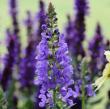
Blue flower spikes. Grey-green foliage. Clumping. USDA 4-9
35 found, showing page 2 of 3










